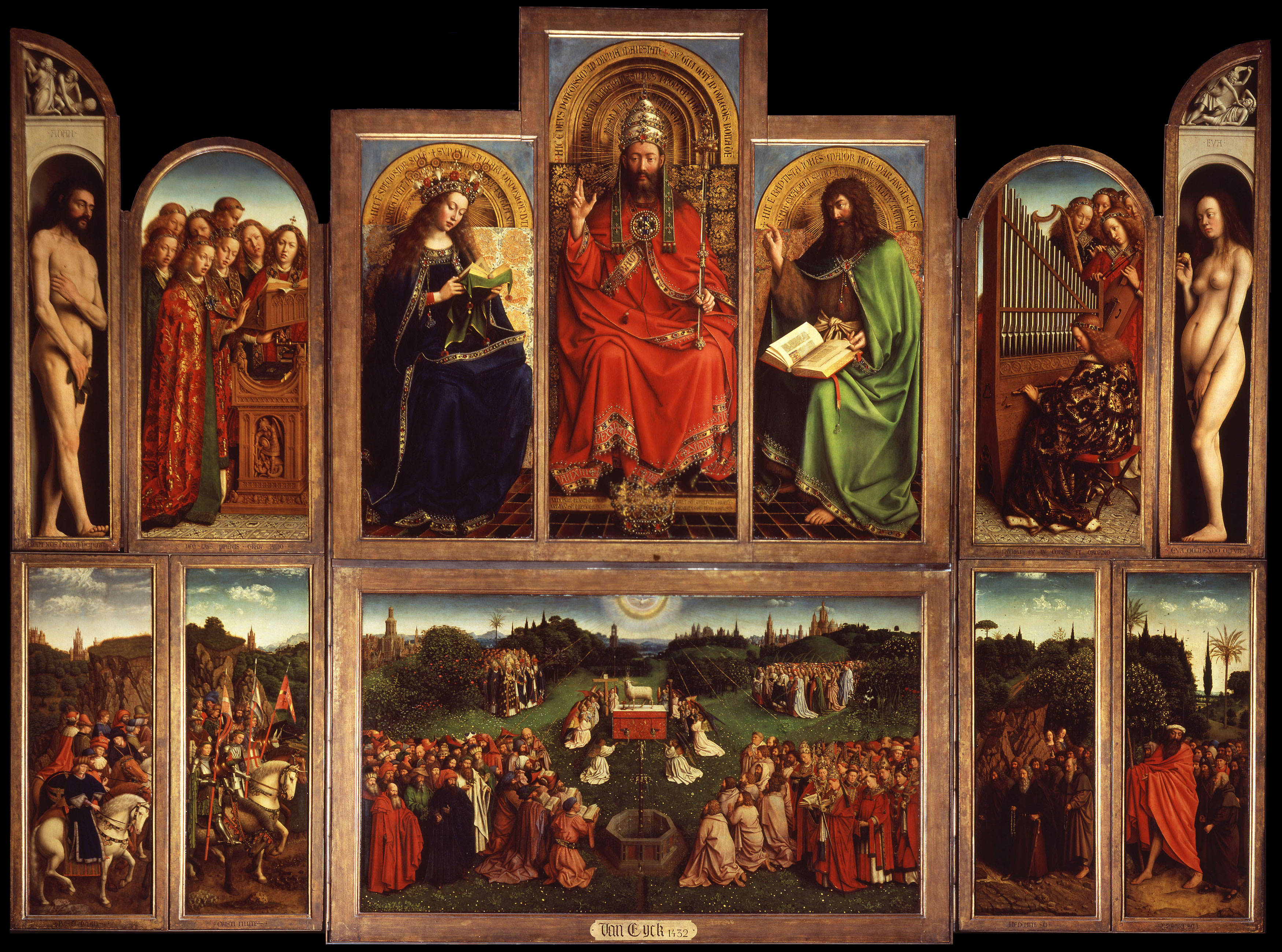Its been a while since my last post. I found this article about a website which allows viewers to get up close and personal to Van Eyck's Ghent Altarpiece (read here). As an enthusiast of Northern European works, I couldn't help but share! The site is called Closer to Van Eyck and it allows visitors to zoom in and out of the work without getting the pixelation which usually follows zooming in. It also includes various modes of x-ray and infrared modes of viewing. These options allow one to see the under drawing usually associated with works from this period.
 | |
| Ghent Altarpiece, Jan van Eyck, Oil on Wood, 1432. |
While visiting this website, I couldn't help but think of how the internet is used to educate the masses and what it allows us to do. Sites such as this as well as the Google Art Project, which I have posted on before, allows art lovers and art historians to get nice and cozy with our favourite works, something not even the best art historians get to experience. However, this mode of viewing doesn't allow one to "feel" the work, something else I have written about.
Most of the works I have seen have been online, rarely experiencing them in person. My favourite site is probably Vatican.va. There's a virtual tour of the Vatican and Saint Peter's and, for those who have an iPad (shameless plug!) allows one to rotate and swivel ones view of specific areas. Using such a site on this specific type of viewing device is almost like being able to touch the work. It feels as though that great distance between my couch in Toronto and Rome is removed and I am able to get up close and personal with my favourite works. Though I "ooo and aww" at these sites, I know I am missing the actual experience of standing before such perfection and genius!
This is only furthered when one gets to experience a work in person. My one and only trip to London, England allowed me to see some of my favourite works in person. And though I wasn't able to get so close to the Turners or Constables as I would be able to online, there is something about standing in front of the actual painting. It becomes real. It is no longer a piece of work that I have studied and zoomed in and out of online but something that's real. You can feel the movement of the brush strokes rather than plainly seeing them on a screen.
I am in no way stating that these sites are a bad idea, quite the opposite. It allows people like me and, I am sure some those who will read this, the opportunity to get personal with an artwork we will probably never see in person. But I think it is important to note that viewing it online is nothing like viewing it in person. It is an excellent educational tool and fantastic for research purposes. And though it brings us closer, there is still a distance that one is aware of which only makes that longing to see it in its flesh even worse!
My piece of advice is to view these sites as often as possible and be aware of all future sites which bring art to those who are interested. Art is not the most accessible source of education or entertainment and sites like these bring works to life and allow it to be accessible.
Happy viewing!
No comments:
Post a Comment